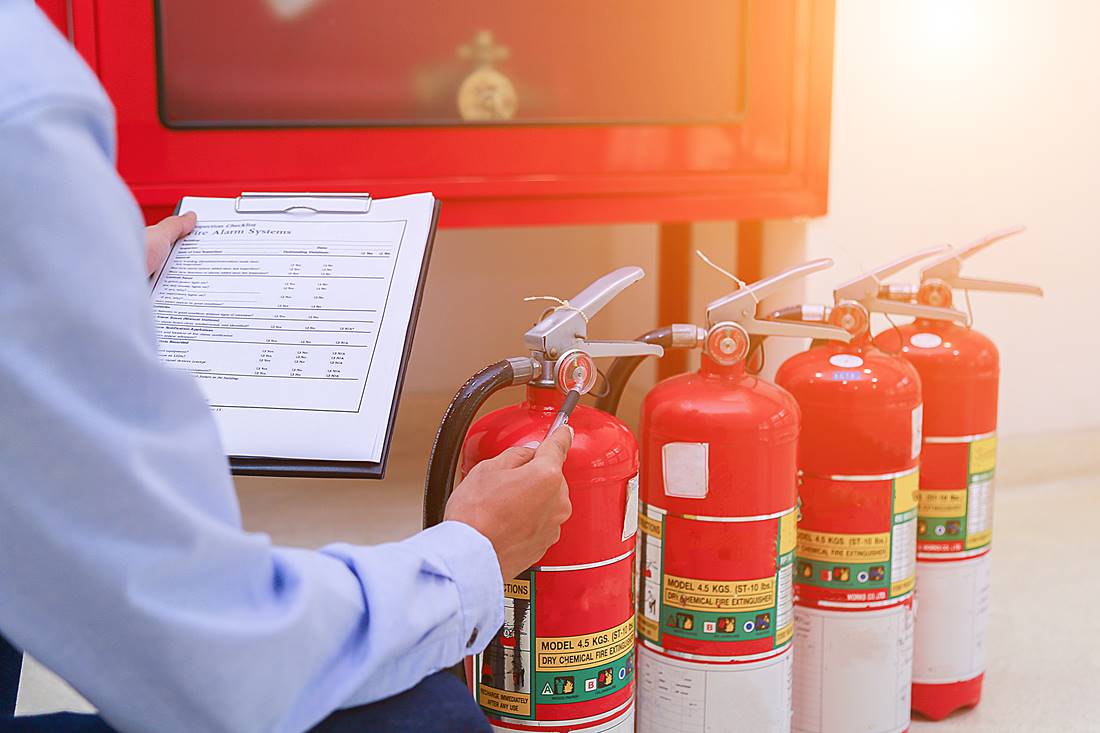Losing life and property is never something that can be easily shrugged off. In 2019, some 1,200,000 fires were reported with about half a million of which were structural fires. These fires have resulted in over 3,000 deaths and 16,600 injuries. The total cost of losses due to these fires was recorded at $14,800,000,000.Investing in a strong fire and life safety ecosystem will definitely help save lives and property especially in the case of commercial establishments.
The Fire and Life Safety Ecosystem
Ensuring fire and life safety takes more than just installing equipment and devices and conducting employee or worker awareness training. It’s an entire ecosystem with components that are supposed to work together like cogs turning in clockwork efficiency. Such an ecosystem is designed to minimize risks from fire and other hazards as well as to prevent losses both in manpower and financial resources.
The components of a strong fire and life safety ecosystem combine government policy, industry standards and regulation, compliance, professional training, emergency preparedness, and response, tooling up, and awareness. Policy and codal provisions are largely the responsibility of government and industry regulators. But industry players and lobby groups can certainly take part in the policy development and formulation especially since they are on the ground and are likely to have a closer view of the risks, realities, and possibilities.
Relevant and comprehensive policies and goals will have to be enforced and practiced. Clear reference standards will have to be set and cascaded down to the workplaces and business establishments. In terms of compliance, this should periodically be monitored locally by in-house teams or through third-party consultants for unbiased and objective views. Compliance monitoring should also cover investments in safety equipment and tools as required by current codes and standards. These tools should include emergency preparedness and response equipment.
Skilled and trained professionals and manpower are also necessary for keeping the ecosystem strong. Apart from the initial training to obtain knowledge and skills in fire and life safety, regular assessments, as well as updates or retooling, should also be conducted. Commercial establishments can have their own team of skilled fire and safety professionals who are knowledgeable and specialized in the risks and hazards in their line of operations.
All these components that make up the ecosystem should be in place otherwise, the risks are not mitigated and could even be heightened. Communities and establishments should assess their own ecosystems and find out what gaps need to be addressed to keep themselves protected.
The Business of Fire and Life Safety
With such staggering figures and the evident need for protection, it is no wonder that the fire and life safety industry is seeing such positive growth prospects. There is no doubt that the global business scene has been hit quite drastically by the pandemic of the past couple of years. This industry is no different especially since access to locations, buildings, and properties has been impeded, severely impacting their capabilities for service delivery, product manufacturing, supply chain management, and client fulfillment.
The strong demand for fire and life safety and protection has fueled the drive for mergers and acquisitions in the industry. Private equity-backed companies are taking the lead in acquisition deals all around the country. This is especially spurred by the strong view that this industry belongs to a recession-proof segment.
Revenues have remained steady despite the pandemic. Globally, the market size is valued at over $67,000,000,000 in 2020, with the US accounting for some 37% of the total revenue share. Moving forward to the next seven years, the global compound annual growth rate is expected to be at 6.8%. Total market revenue worldwide is projected to be at almost $115,000,000 in 2028.
Mergers and Acquisitions: Fortifying the Industry
In the face of the challenging business environment as the pandemic and its effects linger, joining forces and consolidating resources is a brilliant way to boost business for players in the fire and life safety industry. According to industry data, a few dozen deals were closed in 2019 followed by a slight increase in 2020. A spike in 2021 figures is expected as acquisition activity has ignited recently.
Historically, the fire and life safety segment is a favorite among investors. Some of the bigger industry players have figured in quite a long list of acquisitions over the years as they expand their presence across the country. These business deals definitely underscore the great value and vast growth prospects that investors see in this industry.
Among the key value drivers that make this industry attractive to investors include recurring revenue, mission-critical products and services, and new opportunities brought on by necessary shifts in regulations and operational requirements. Also, a strong value driver is the currently fragmented market of the industry. There’s a pool of options from which strategic investors can choose based on their acquisition goals.
Moving Forward
The fire and life safety industry remains to be strong and is foreseen to keep its stance and steady growth over the next decade, perhaps even beyond. The acquisitions and mergers are expected to go on with such a positive business outlook. The political and fiscal outlook, however, is not quite rosy and could slightly affect seller and buyer take-away. Still, business owners have reported getting multiple offers which is evidence of strong buyer demand. With much prudence, such mergers and acquisitions will prove to be truly beneficial for both the business owner and the investor. The fertile industry environment is definitely a sign of a positive business outlook despite current challenges.
The pandemic is not quite over yet, but the fire and life safety industry has maintained its pre-pandemic bottom lines. This is proof of industry resilience, business sustainability, and profitability. Such investor confidence and consumer demand on the business side should be supported by a strong fire and life safety ecosystem on the ground to keep the industry in a position of high value and demand.

